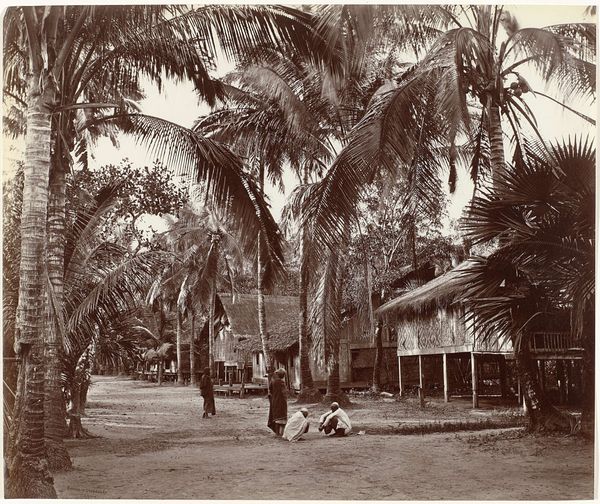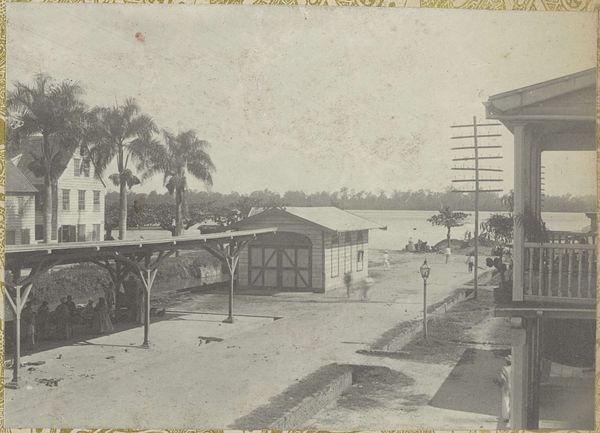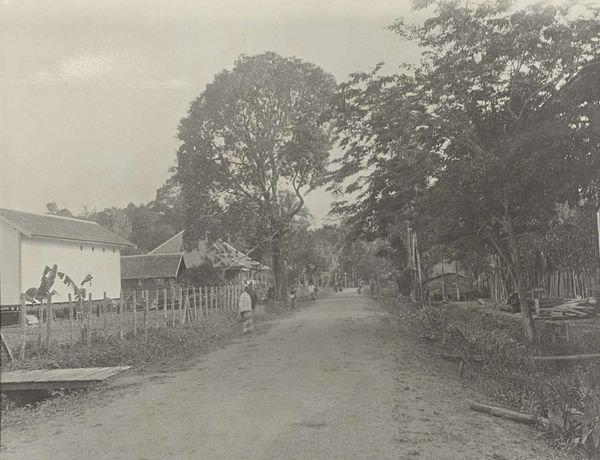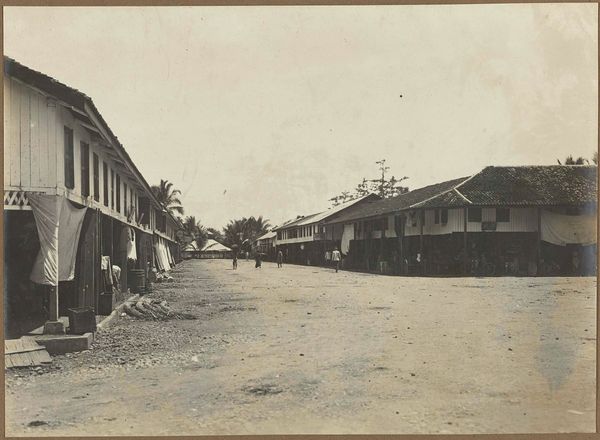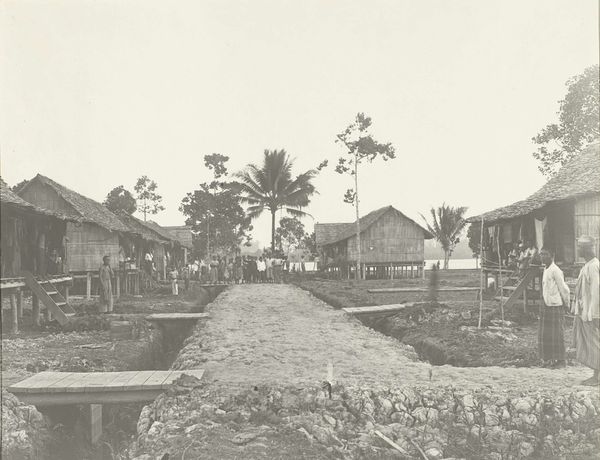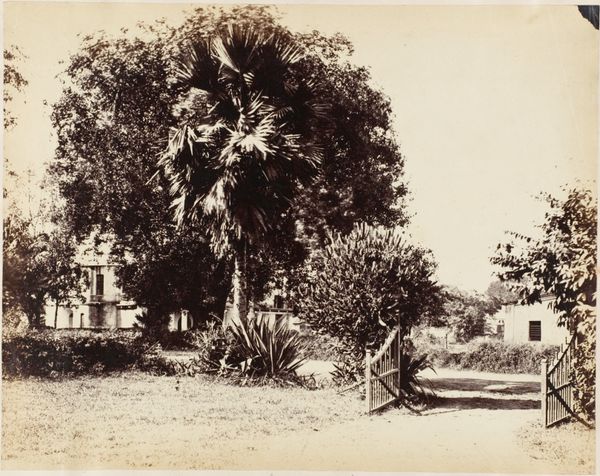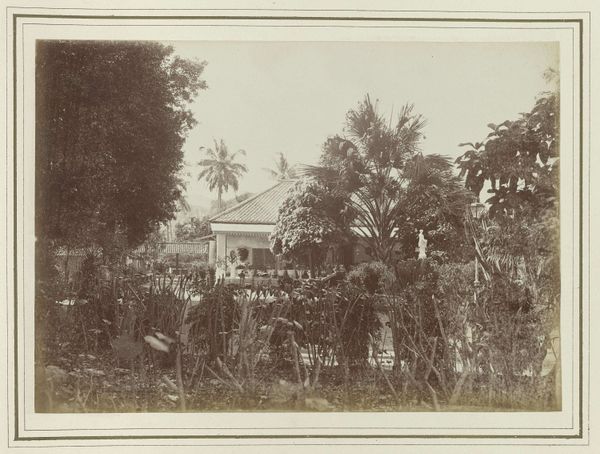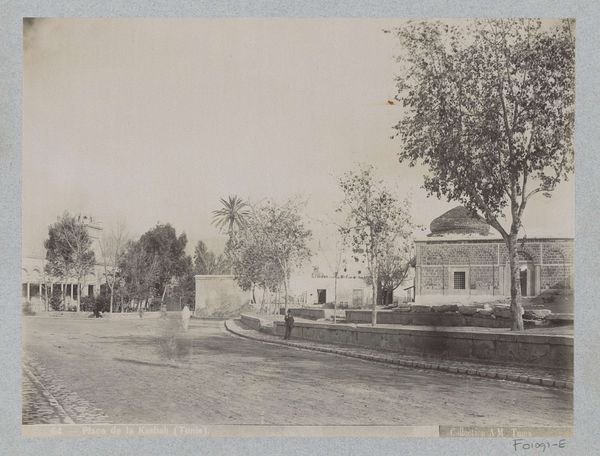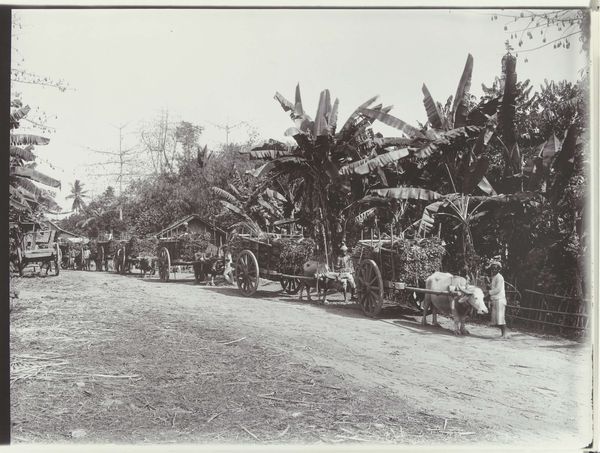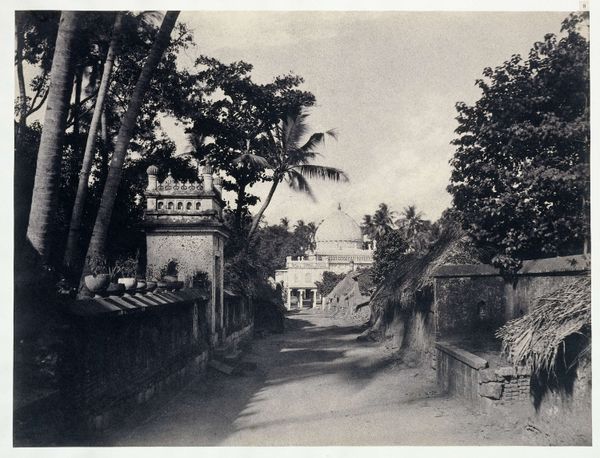
photography
#
landscape
#
street-photography
#
photography
#
cityscape
#
post-impressionism
Dimensions: height 215 mm, width 280 mm, height 385 mm, width 440 mm
Copyright: Rijks Museum: Open Domain
Editor: We’re looking at “Weg door havenplaats,” a photograph taken sometime between 1903 and 1907. It depicts a street scene in what appears to be a tropical port town. It’s incredibly atmospheric; the sepia tones lend it this wonderful nostalgic feeling. What strikes you most about this image? Curator: What stands out is how this image functions as a visual record, both embracing and subtly shaping colonial narratives of the time. How does this "street photography" reinforce power structures? Editor: Hmm, interesting. What kind of power structures do you mean? Curator: Consider who is missing, who is prominent. It seems the photographer wants to showcase the "exotic" location for a Western audience, but in doing so, it subtly implies Western progress by showcasing infrastructure and buildings; the inclusion of local inhabitants feels almost performative, don't you think? Editor: I see what you mean. It feels a bit… curated. Do you think the artistic intentions align with a political agenda? Curator: Well, intention is always tricky to ascertain definitively. However, consider the institutions that likely supported or collected photographs like these. Museums, geographical societies, and even colonial offices often used such images to solidify perceptions of the "Other," to categorize and ultimately to exert control. Was this art, or was it propaganda? Editor: That's quite the shift in perspective. So you’re suggesting we shouldn’t just see a pretty scene, but question the societal context behind its creation? Curator: Precisely. By considering the cultural and political milieu in which this photograph was produced and consumed, we gain a far deeper understanding of its meaning and enduring legacy. It becomes a valuable document, not just of a place, but of a complex power dynamic. Editor: I’ll definitely think about photography and art differently now. This historical lens has changed how I view images in general.
Comments
No comments
Be the first to comment and join the conversation on the ultimate creative platform.
